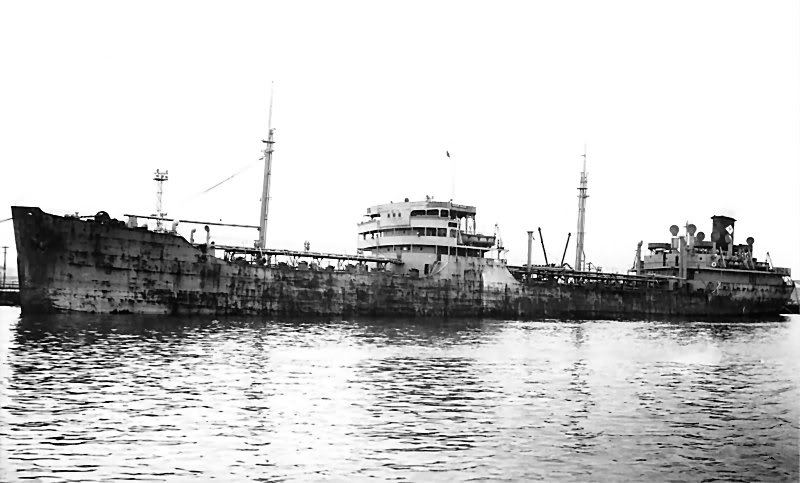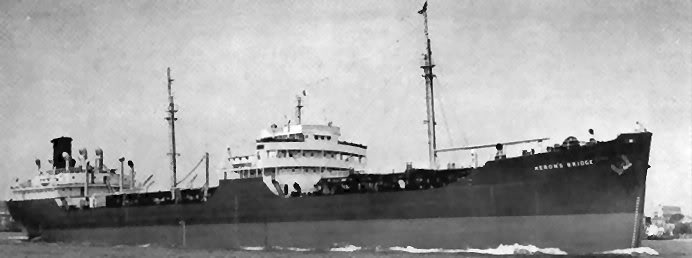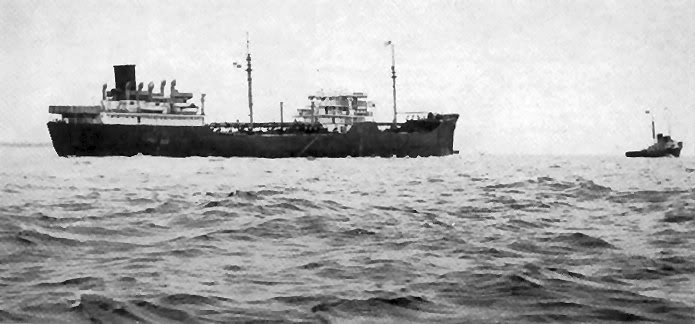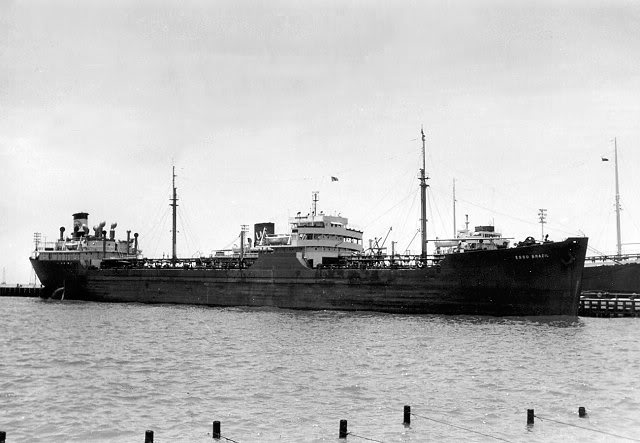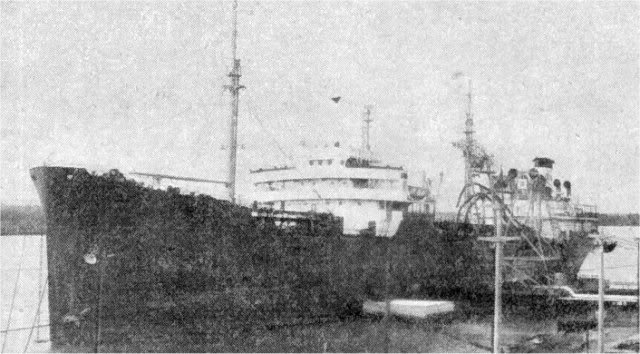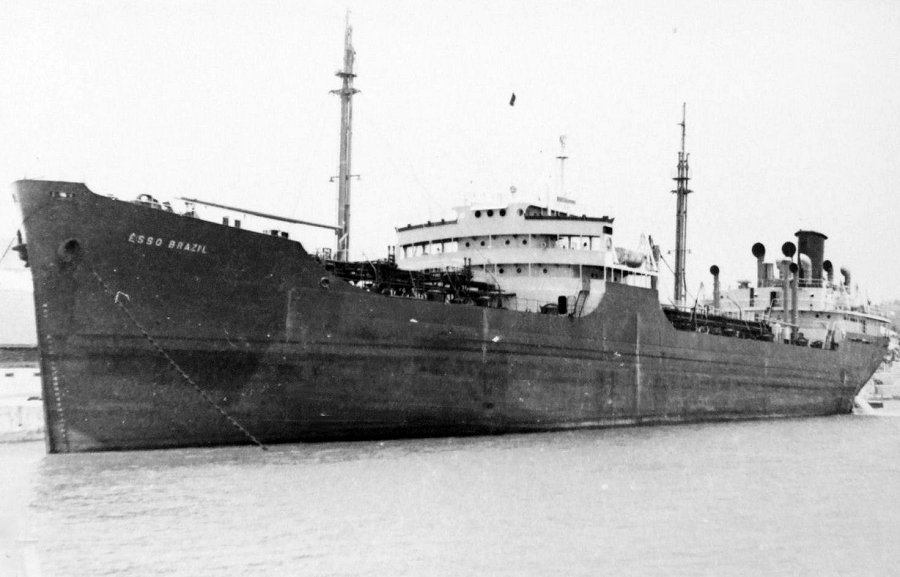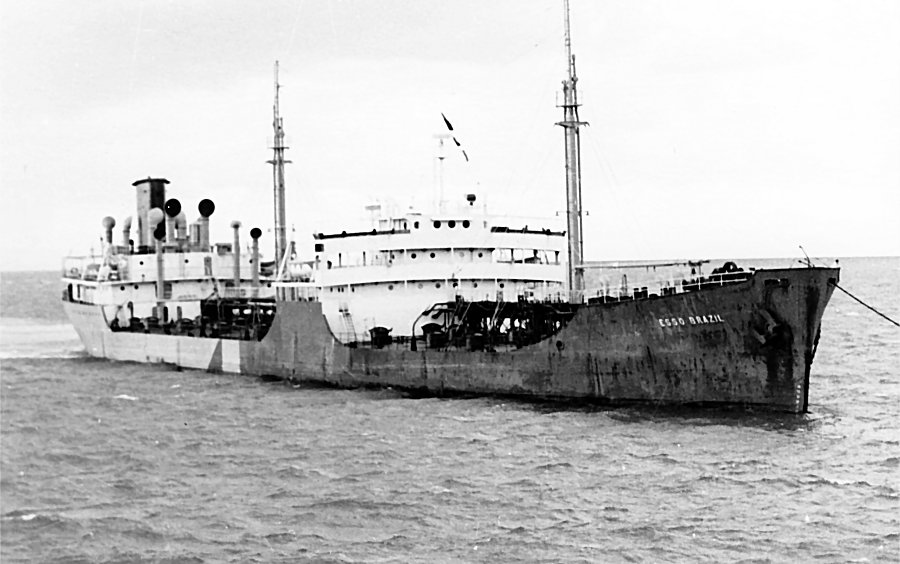Auke Visser's Famous T - Tankers Pages | home
Heron's Bridge
T2-SE-A1
"Heron's Bridge".
"Heron's Bridge".
( Photo thanks to Alberto García )
"Heron's Bridge".
"Esso Brazil", ex. "Heron's Bridge".
( Photo thanks to Ramon Alvarez Mutiozabal )
"Esso Brazil", ex. "Heron's Bridge".
"Esso Brazil", ex. "Heron's Bridge".
HERON'S BRIDGE, T2-SE-A1
History :
Built by Sun Shipbuilding & Dry Dock Co., Chester, Pennsylvania.
Yardnumber 474. UMSC No.2448. Official nr. 248530.
Keel laid 15-05-1945. Launched 13-08-1945. Completed 31-08-1945. Gr. 10297 t., Net. 6236 t., Dw. 16613 t. L.o.a. 159,57 m., Br. 20,78 m., Dr. 9,31 m. Engine: 2 steam turbines, manufactured by Elliott & Company, Pennsylvania. 7240 B.h.p., 5401 kW. Speed 15 knots. 26 Tanks.
History:
HERONíS BRIDGE-1945 completed for United States War Shipping Administration, Philadelphia, USA.
HERONíS BRIDGE-1947 for Lanmore Company Inc., Cosmopolitan Shipping Company Inc., Panama.
ESSO BRAZIL-1948 for Panama Transport Company, Panama.
PETROMAR BAHIA BLANCA-1961 for Petromar S.A. de Navegacion, Buenos Aires, Argentina.
Additional Reports:
Reported Esso Brazil lengthened and fitted to carry part cargo of l.p.g. by Howaldtswerke AG, Hamburg, 1954,
New dimensions 172.0 m oa, 11008 grt / 17910 dwt.
Reported Petromar Bahia Blanca sold to shipbreakers in Spain. Arrived Santander 18 Feb. 1967 to be broken up. Work began Mar. 1967. [ By Recuperaciones Submarinas S.A. ]
|
The first specialized LPG vessels to trade were in fact dry cargo ships converted and refitted with cylindrical pressure tanks by the Bethlehem Steelyard in Beaumont, Texas. The first of these, completed in 1947for Warren Petroleum, was the 6,050 cubic meter Natalie O. Warren (with 68 vertically installed tanks in five holds) and the next, delivered two years later for Lorentzen, was the 3,000 cubic meter Ultragaz (with 29 vertical and two horizontal tanks). The steel tanks had to bedesigned of such thickness so as to withstand working pressures up to 17 kg. per square centimetre.
At the same time, Esso began converting T2 ships for combined LPG and petroleum products carriage. Their initial venture in this field, the Esso Sao Paulo, included 8 vertical pressure tanks installed in the vesselís centre tanks. The Esso El Salvador and Esso Brazil followed withsimilar configurations.
The combined transport of LPG and petroleumproducts proved to be somewhat cumbersome for Esso to manage in their trade to Brazil and they sold out their business in 1954.
|
